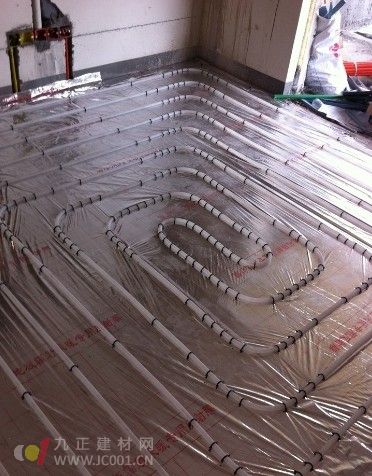Editor's note: Many homes are now choosing to install underfloor heating, but many people only understand the basics of this system. How much do you really know about the technical aspects, installation methods, and functional features of floor heating? 1. "Can I only use a suspended installation method?" Due to the unique structure of the underfloor heating system, it's not possible to nail the flooring directly onto the concrete slab. That's why most floors installed over geothermal systems have traditionally used a suspended method. However, with technological advancements, there are now two other options: direct bonding and keel installation. Recently, a new type of quick-installation keel has emerged. This keel can be fixed to the floor using adhesive instead of nails, and then the floor is attached to the keel. This not only improves the feel of the floor but also allows air to circulate between the keels, enhancing heat distribution and reducing deformation. It’s currently the recommended method for geothermal flooring. 2. "Is the term 'geothermal floor' accurate?" The market for floor heating products is full of confusing names like 'heat-resistant floor', 'geothermal-resistant floor', or 'radiant floor'. These terms are often misleading. In fact, the correct definition should be: a wooden floor suitable for ground radiant heating systems that efficiently transfers heat from the floor into the room. Standardizing the terminology is essential as the technology continues to develop. 3. "Does a thicker floor mean better insulation?" While floor thickness affects comfort, it's important to understand that wood is a poor conductor of heat. The thermal conductivity of wood ranges from 0.17 to 0.34, which is lower than water (0.5). A thicker floor can actually hinder heat transfer, causing more energy loss. Additionally, thick floors are more prone to warping and cracking due to thermal expansion and contraction. For geothermal systems, an ideal thickness is between 8-12 mm. 4. "Are wide floor planks suitable for geothermal heating?" Many consumers prefer wider planks for aesthetic reasons, sometimes up to 180mm in width. However, in a geothermal system, such widths may lead to gaps due to moisture changes. Experts recommend narrower planks to avoid issues like swelling and shrinking, especially when the floor is heated. 5. "Is aluminum foil padding necessary for floor heating?" This is a common misconception. Underfloor heating relies primarily on radiant heat, followed by convection and conduction. Aluminum foil can block radiation, reducing efficiency. Foam pads without aluminum film are better because they allow for better heat transfer. When selecting underfloor heating materials, choose those with low thermal resistance and good moisture resistance. 6. "Should I add plywood or particleboard under the floor?" Adding these layers is not recommended. They can reduce heat transfer efficiency, increase energy costs, and even cause problems if the material quality is poor. Poor-quality boards may release excessive formaldehyde or absorb moisture, leading to warping and damage. It's best to avoid them altogether for optimal performance and safety. By understanding these key points, homeowners can make informed decisions when installing underfloor heating systems, ensuring both comfort and long-term durability. Single Ramming Pole Mounting System Features: Solar Panel Pole Mount,Solar Panel Mounting Brackets,Ground Mounting System,Solar Panel Stand,Single Ramming Pole Mounting System Hebei Honde Plastic & Metal Co., Ltd. , https://www.foundation-system.com
1. It is very easy to install Ramming Pole Mounting System. You should insert vertical pillar into ground by Pile Driver. (The depth can reach 1500-2000mm).
2. High adaptability
The ramming pole mounting system can be widely used different geological conditions. Besides, the installation is free from seasonal change.
3. Environmental-friendliness
There is no much preparation for installation and piles can be recycled. It had no damage and no corrosion to environment.
4. Ramming pole can be easily installed and removed.
5. The ramming pole mounting system areas with low rock content to reduce cost on base construction and to shorten installation time.